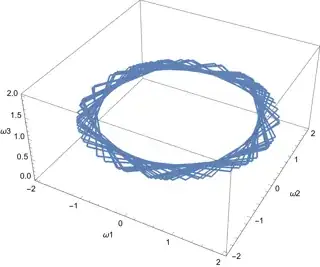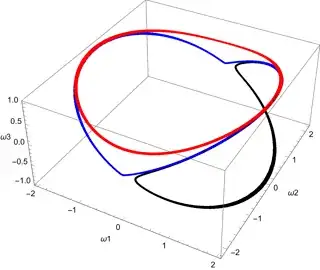Consider the following equations
\begin{align} I_1 \frac{dΩ_1}{dt} + (I_3 - I_2)Ω_2 Ω_3 &= K_1, \\ I_2 \frac{dΩ_2}{dt} + (I_1 - I_3)Ω_3 Ω_1 &= K_2, \\ I_3 \frac{dΩ_3}{dt} + (I_2 - I_1)Ω_1 Ω_2 &= K_3. \end{align}
According to this equation if external torque is zero,then the following results occur
\begin{align} I_1 \frac{dΩ_1}{dt} + (I_3 - I_2)Ω_2 Ω_3 &= 0, \\ I_2 \frac{dΩ_2}{dt} + (I_1 - I_3)Ω_3 Ω_1 &= 0, \\ I_3 \frac{dΩ_3}{dt} + (I_2 - I_1)Ω_1 Ω_2 &= 0. \end{align}
Here $K_1,K_2,K_3$ are torques and $I_1,I_2,I_3$ are moments of inertia.
I used Runge-Kutta 4th order method to predict the angular velocity and used the Euler equation to calculate the rate of change of angular velocity (for Runge-Kutta method). But after observing the plot of energy after looping this method for some amount of time (say 50000 seconds), the energy was not conserved. There is a decrease in amount of energy. I am not sure what is causing this decrease in energy. Is the angular momentum not conserved according to the equation?

